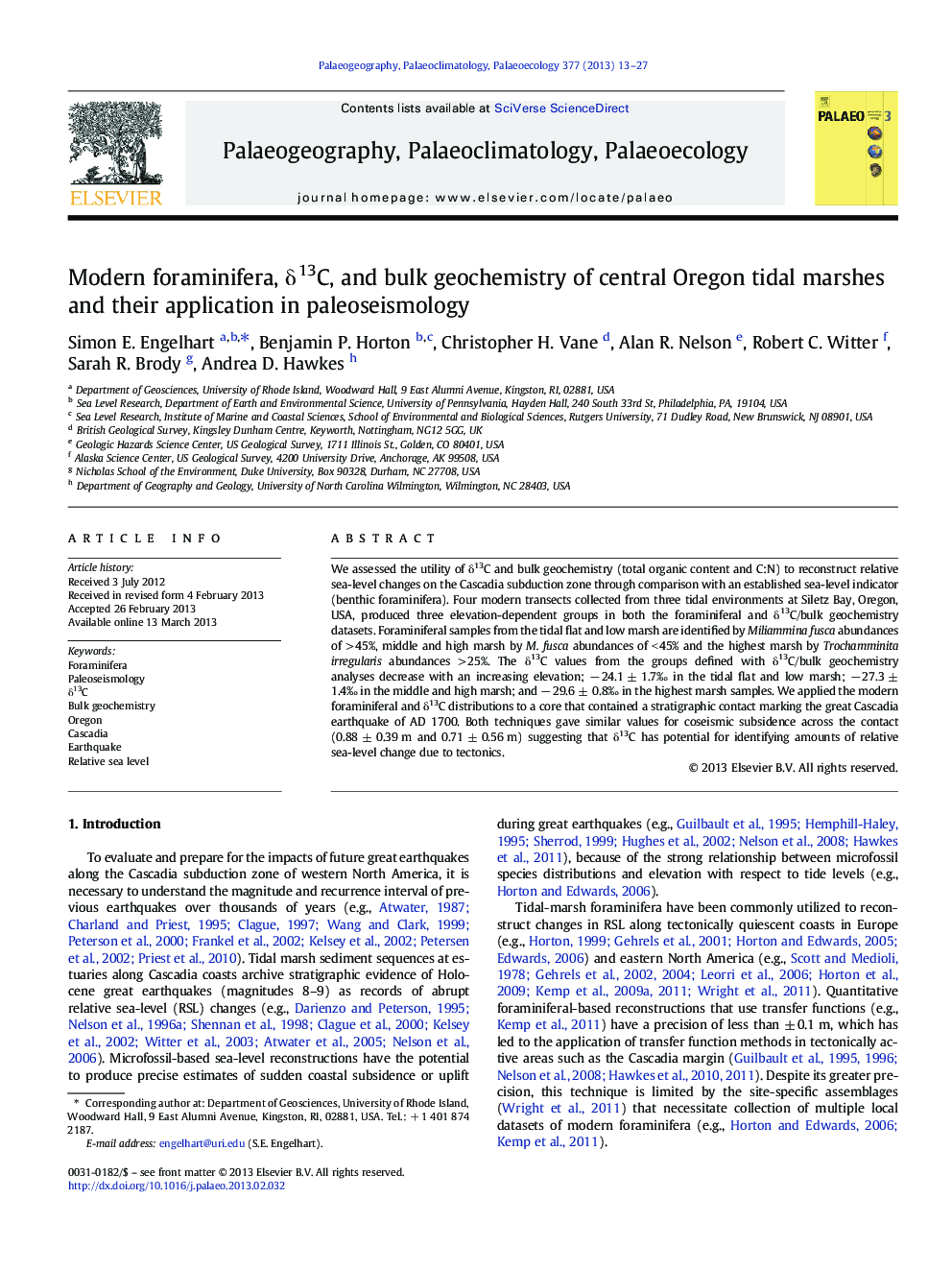| Article ID | Journal | Published Year | Pages | File Type |
|---|---|---|---|---|
| 4466567 | Palaeogeography, Palaeoclimatology, Palaeoecology | 2013 | 15 Pages |
•Compared tidal marsh foraminiferal assemblages with δ13C and bulk geochemistry data•3 elevation dependent groups in both foraminiferal and δ13C/bulk geochemistry data•Developed new semi-quantitative method to assess magnitude of coseismic subsidence•Applied the method to a stratigraphic contact marking the AD 1700 earthquake•Produced a subsidence estimate of 0.71 ± 0.56 m
We assessed the utility of δ13C and bulk geochemistry (total organic content and C:N) to reconstruct relative sea-level changes on the Cascadia subduction zone through comparison with an established sea-level indicator (benthic foraminifera). Four modern transects collected from three tidal environments at Siletz Bay, Oregon, USA, produced three elevation-dependent groups in both the foraminiferal and δ13C/bulk geochemistry datasets. Foraminiferal samples from the tidal flat and low marsh are identified by Miliammina fusca abundances of > 45%, middle and high marsh by M. fusca abundances of < 45% and the highest marsh by Trochamminita irregularis abundances > 25%. The δ13C values from the groups defined with δ13C/bulk geochemistry analyses decrease with an increasing elevation; − 24.1 ± 1.7‰ in the tidal flat and low marsh; − 27.3 ± 1.4‰ in the middle and high marsh; and − 29.6 ± 0.8‰ in the highest marsh samples. We applied the modern foraminiferal and δ13C distributions to a core that contained a stratigraphic contact marking the great Cascadia earthquake of AD 1700. Both techniques gave similar values for coseismic subsidence across the contact (0.88 ± 0.39 m and 0.71 ± 0.56 m) suggesting that δ13C has potential for identifying amounts of relative sea-level change due to tectonics.
